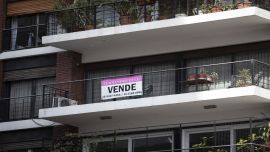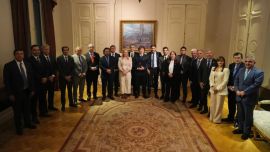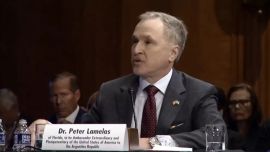Protesters in Colombia have been marching for nearly a week in demonstrations that are drawing students, workers and even entire families.
Though several Latin American nations are experiencing a wave of protests, Colombia’s are perhaps unique for the diverse range of protester complaints—worries about rumoured pension cutbacks, concerns over job prospects, calls to implement a peace accord, insistence on rights for indigenous groups and women, denunciations of shark fishing and fracking.
The demonstrations are above all a general rejection of the government of Iván Duque. Despite positive economic growth, many protesters feel he hasn’t done enough to address long-standing issues like corruption and inequality.
Such mass protests may have become possible in part because the nation’s 2016 peace deal, which ended over five decades of conflict between guerrillas, the state and right-wing paramilitary groups. During the years of the war, protesters risked being stigmatised—and targeted—as supporters of leftist rebels, a concern that has largely diminished with the disarmament of the Revolutionary Armed Forces of Colombia (FARC).
Here are the voices of four Colombians participating in the marches.
___
MICHAEL CANO
Before Colombia’s recent protests, Michael Cano had never participated in a march.
The youngest of eight children, Cano said he was driven to demonstrate because of his own experience as a pharmacy student.
It took the 25-year-old several years of working at a call centre to save up enough money to afford college. Now he worries about his future employment prospects in a country where 17.5 percent of young adults are without work.
He showed up a recent protest dressed in green medical scrubs, in a nod to his career and a medical system he said is eroding.
“I want the president to know we are angry at what’s happening,” he said. “They’re investing more in malls than they are hospitals.”
He also decried what he and others see as a heavy-handed response by police. Though the demonstrations have been largely peaceful, riot officers have used tear gas to disperse crowds and one 18-year-old student was killed after being hit by a projectile, though the cause of death remains under investigation.
“That could happen to any of us young people who are marching,” he said.
___
MAYILA LARA
To get to Colombia’s capital in time for the first march, Mayila Lara had to travel from deep within the Amazon region to reach an airport.
She said she spent three hours travelling along a river by canoe, then hopped on a motorcycle taxi and at last reached her flight to Bogota.
“We want to be heard,” said Lara, who is from an indigenous group.
The 26-year-old said she has seen the Amazon grow steadily contaminated by illegal mining and damaged by deforestation.
She wants Duque to improve conditions for indigenous groups, whose leaders have been targeted by remaining illegal armed groups battling over lucrative drug routes after the signing of the nation’s 2016 peace accord with leftist rebels.
Lara said she laments watching the land of her ancestors deteriorate and indigenous practices like the spiritual agricultural harvesting known as “chagras” disappear.
“Our traditions are being broken,” she said.
___
PABLO ARENALES
The human rights attorney who fled Colombia for a time after his life was threatened during the nation’s long civil conflict is driven to protest because he believes the government isn’t doing enough to implement the peace accord.
But Pablo Arenales is also upset that his relatives who earn minimum wage often can’t make ends meet and that younger family members are having trouble affording or getting a spot in a university.
“We want changes that favour the Colombian people,” he said.
The 47-year-old has been attending the marches with his elementary school aged son in hand in what he hopes will be a valuable civics lesson.
“They need to learn rights are something you fight for,” he said.
___
ANA MARIA MOYA
For Ana Maria Moya, safety feels hard to find.
The 19-year-old college student said she’s been robbed numerous times, regularly experiences street harassment and is frustrated by a system where most crimes go unpunished and women deal with chauvinism and inequality.
“I’m upset because life in Colombia has been difficult,” she said.
Moya said her parents—a housewife and a chef—went into debt to put her through college and worry about her participating in the marches.
She attends the protests daily, anyhow, intent on continuing in the streets with others “until we see hope for a dignified life.”
“For me, more than a march it is a way of expressing how I feel,” she said. “I want a change and I’m not going to let others speak for me.”
by Christine Armario, Associated Press



















Comments